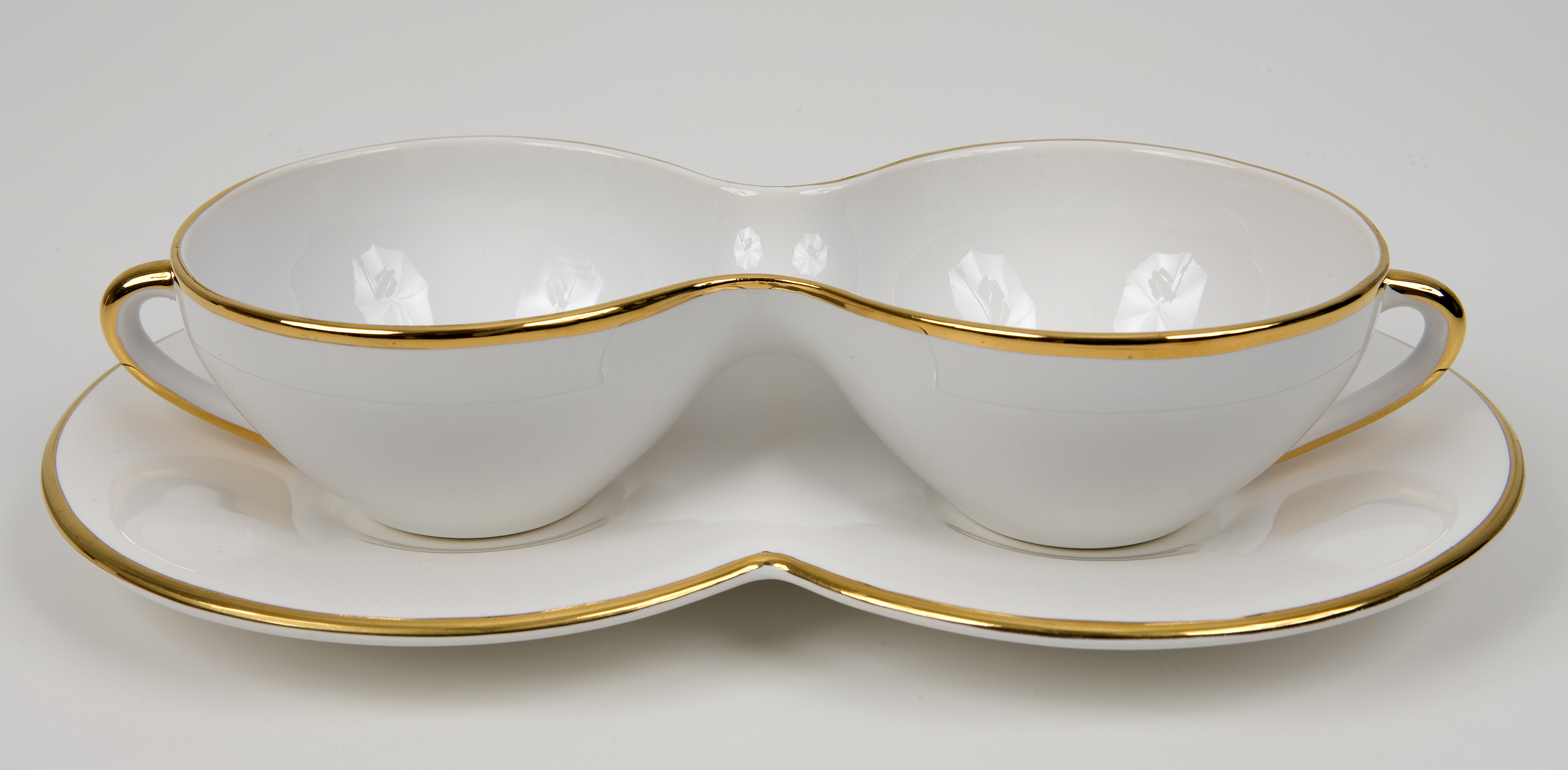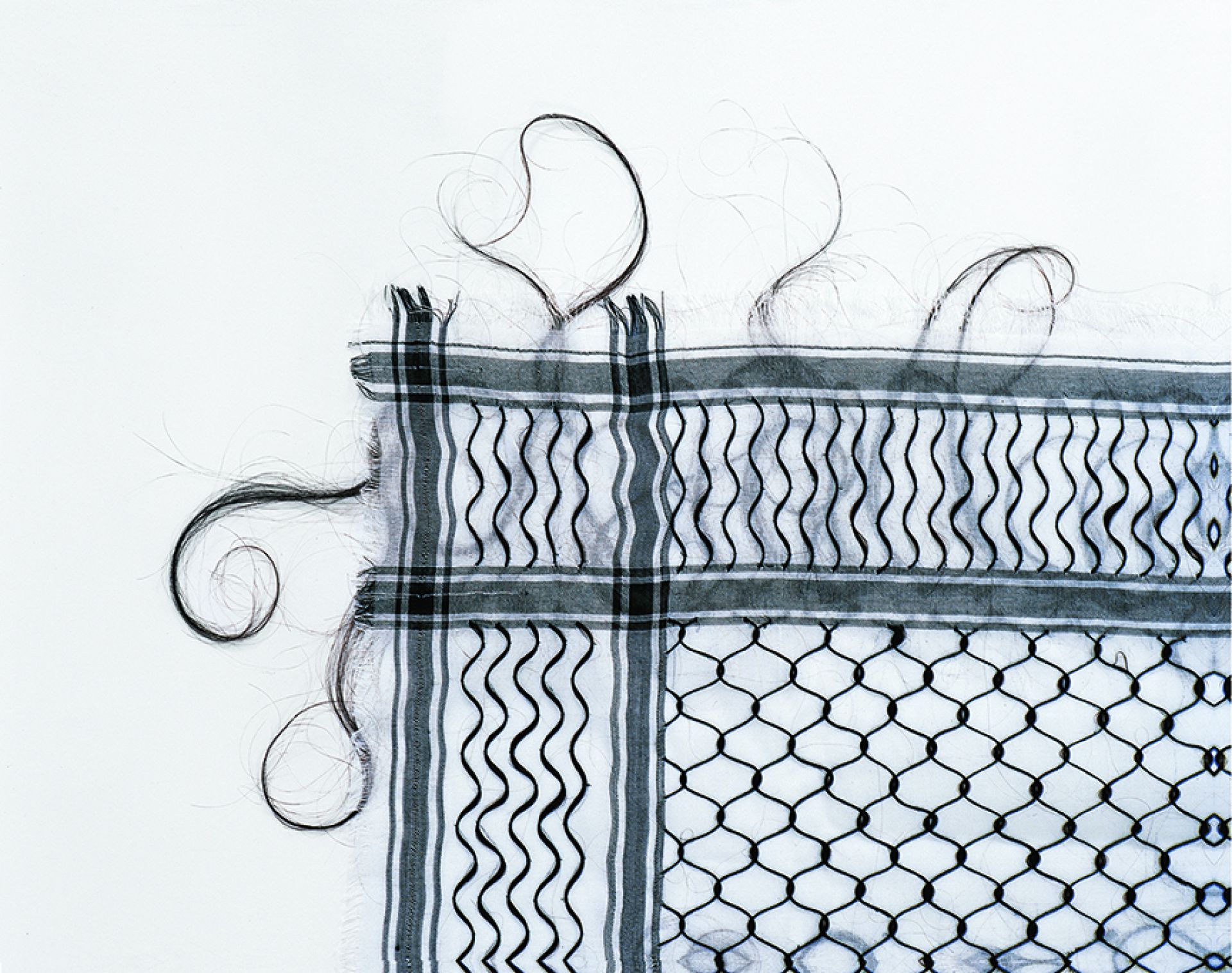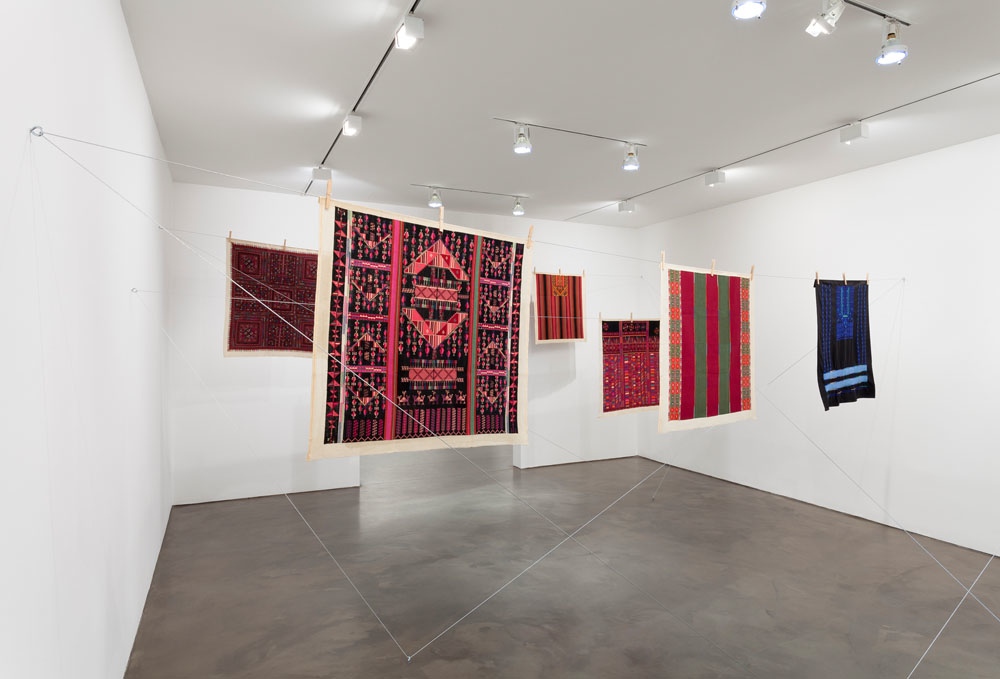Tea with the bogeyman

Born in Beirut to a Palestinian family who fled Haifa during the Nakba, 23 year-old Mona Hatoum found herself stuck in London with the outbreak of war in 1975, adding one exile to another and producing her early works in Thatcherite Britain, works that have since borne the scar of wars and frontiers piling up between her and her former life.
Some western critics have a hard time stomaching this background; there seems to be a confusion as to how art like Hatoum’s can be both universal enough to make it into timeless places like Centre Pompidou or Tate modern, while simultaneously identifying with a country that is off the map.
Their solution to this dilemma usually runs along the lines of her art being so relevant to the West as to be redeemed from its Palestinian background. The catalogue introduction to her Pompidou retrospective reads for example: "Mona Hatoum doesn’t construct the work of a Palestinian exiled in London (…) she’s an artist of the present, in phase with our modernity and its issues [italics added]."
As if exiled Palestinians are by definition outside the present, living some pre-modern apocryphal version of history that could spoil our reading of Hatoum’s art if allowed to interfere too much. That is exactly what this article is proposing, for the pleasure of provoking, but also of opposing a discourse that threatens to write off Hatoum’s art as a harmless western product with a pinch of spice.
Repatriating Hatoum's art is not without its dangers
Of course, this is not to undermine the list of achievements Hatoum will be credited for by western art historians, achievements relating to "[their] modernity and its issues", like masterfully managing the shift from minimalism to post-minimalism, reconciling the legacy of 20th century abstraction with new forms of political engagement and other achievements with little relevance to the Arab spectator, who will be instantly bewitched by Hatoum’s works, no introductions necessary, as they will speak to him in a language he knows too well.

On the other hand, repatriating Hatoum’s art is not without its dangers. The sheer scale and diversity of her work are beyond regional confinement, her charm stems from a sense of foreignness and from a delicate presence of homeland that risks getting crushed by insisting too much on defining it.
In Keffieh, for example, bits of Hatoum’s hair are woven into the emblematic Palestinian textile, curling out like noxious weed. The result is unsettling and leaves much to be said: maybe it’s a way of addressing the dangerous femininity that overgrows a national icon; hasn’t the keffieh always been made for men by women, at the expense of their own lives and bodies?
Isn’t it also the symbol of a resistance written by men, while a closer look reveals the traces of a femininity amputated to create the masculine icon? What about women’s hair? Is it still ‘awrah, an intimate part to be covered, when it is woven into the very tool that could be used to cover it?
Hatoum’s Keffieh doesn’t ask any of these questions though. It’s a silent object, all it does is to exist, to provoke. The questions are our way of explaining away the sudden unease towards an object we knew to be familiar and harmless. But the power of Hatoum’s work lies precisely in its ability to resist explanation, insisting on communicating its meaning in a way instinctive, telepathic, yet crystal-clear.Danger lurks beneath the surface
Hatoum re-teaches us how to look at things. No object is innocent nor safe from power dynamics, nor from some sinister violence hiding within it, waiting for a poke to reveal its teeth; and no one is better than Hatoum when it comes to awakening the bogeyman latent in things, unleashing it without prior warning to scare us like children, leaving each to draw the lesson they deserve.
What if two teacups are merged together like Siamese twins? All it takes is one look at T42 (1999) and it’s as if teacups have always been like this. Hatoum’s teacups are oppressive and yet very fragile, they have something of the emotional blackmail of family tea gatherings, of thorny one-sided conversations.
Here, it’s impossible for both people to drink at the same time, one of them is taking everything unless the other decides to respond to the object’s violence with a new violence, to break the cup free with the risk of losing the other, scarring it beyond repair if not completely destroying it, or destroying both cups. The work becomes more nightmarish when we learn that its title T42, apart from the pun and the reference to the hit song tea for two, is also the name of a tank.

In an article about Hatoum, Edward Said read in these objects an attachment to a homeland that longer exists. Exile exerts its violence on memory, forcing daily objects to bear the scars and anxieties of their user, who recreates them in his own image: freakish, damaged and stuck between distant realms: "domesticity is thus transformed into a series of menacing and radically inhospitable objects whose new and presumably non-domestic use is waiting to be defined. They are unredeemed things whose distortions cannot be sent back for correction or reworking, since the old address is unreachably there and yet has been annulled (…) memory keeps insisting that these objects were known to us, but somehow aren’t any more, even though memory clings to them relentlessly."
Windows on a lost world
In 2012, Hatoum collaborated with refugee women to produce pieces of traditional Palestinian embroidery, famous for their different patterns relating to different regions of Palestine. She then hung them like laundry in the gallery space. The work seems mundane until its magic is activated by the title: Twelve windows. Suddenly, each of the square-shaped cloths becomes a window overlooking a lost Palestinian town.
The title resonates with the famous formula of Alberti, the Renaissance theorist who described the perfect painting as a "window" on the world, a metaphor that governed spatial conception and perspective in western painting until the 19th century. In her Twelve windows, Hatoum makes an ironic comeback to Alberti, with twelve impossible windows overlooking an abstract homeland made of colours, where all perspective is blocked. Each window hints with its pattern towards the idea of a Palestinian town without showing it, maybe because it no longer exists, or maybe because we’re incapable of facing what it has become. The debris is screened with a folkloric signifier, generating warmth and homeliness while secretly asphyxiating us. At the end, all of Hatoum’s windows put together can’t let in a single breath of air and the gallery room is windowless.
The feminist dimension is crucial again. Embroidery has always been considered a minor craft, deprived from the status of "Art" unlike painting, sculpture or architecture, art forms that were made historically inaccessible to women. In this context, Hatoum builds on the ideas of Alice Walker who, among others, called for a re-evaluation of these decorative objects as the only testimony of a repressed talent that had to express itself with limited tools.
In the Arab context where women had little role before the 20th century in artistic or historiographic practice, embroidery presents an alternative method of representing history, not through a succession of man-made political events, but through physical affinity with colours and patterns connecting families to their land. The act of pinning the cloths evokes the image of a mother or a wife hanging them on a refugee camp rooftop to dry, her only remaining window to a lost homeland is the "safety" of her domestic shores. As for the laundry, it’s literally suspended, in a never-ending waiting state.

Juxtaposing the rational and the visceral
Besides daily objects, Hatoum’s work is haunted by another typically Arab obsession: maps. In works like Hot spot, or 3D cities, Hatoum’s relationship with maps is reminiscent of the geography teacher in Saadallah Wannous’s 1968 play Party for the 5th of June, who secretly keeps fragments torn away from the Arab world’s map in his drawer, in hope of giving them another life, or at least to grasp why and how we lost them. In Present Tense (1996), Hatoum reproduced the newly made-up map of the Oslo accords by pressing beads into more than two thousand blocks of traditional Nabulsi soap.
The work’s main force lies of course in the soap’s pungent smell, which both refreshes and confuses the memory of Arab visitors walking in, its freshness penetrating the dead sterilised pores of the white gallery space, transgressing its supposed neutrality, exactly as it transgresses the seriousness of the map imposed on it, which will melt anyway as soon as the soap melts.
If borders were violently imposed on the soap/land, the latter refuses the logic of its oppressor, responding differently: the instinctive sense of smell overcomes the more rational sense of sight, liberating the idea of homeland from maps and lands to become something we feel in the air, surrounding us and infiltrating our bodies.
Hatoum’s works are often driven by this tension between a rational component, bearing the imprint of the Establishment (patriarchy, colonisation, or bureaucracy), like blocked windows, maps, or the gallery space, and a visceral component luring the visitor with emotional icons too powerful to be rationally apprehended, like embroidery, Nabulsi soap, or the keffieh. Battery-like, the two poles are put in conflict, electrifying the visitor wide awake.
By observing how she draws icons from an Arab visual and psychological reserve, manipulating them to create works that refuse to be reconciled with themselves and the space around them, it becomes clear that Hatoum’s experience as an Arab Palestinian woman has a structural role in her art. As for western historiography wanting to neutralise the Arabic bogeyman in her work to facilitate its appropriation, it’s perfectly normal.
Alienation rooted in the post-Naksa condition
Western art (like any other) has always found solutions to its problems elsewhere, re-inventing a long-dead Greek culture during the Renaissance, or expressing its modernity with formal procedures derived from African and Asian arts are but two instances of this phenomena. This time, Hatoum happens to be the perfect candidate to facilitate the encounter and to guarantee minimum reciprocity.
Hatoum’s position – her fame as an exiled Palestinian – is something she achieved because not in spite of: one can even argue that it was this position that enabled her to pull contemporary art out of certain dead ends. Having found herself in a scene whose attitude towards the Arab-Palestinian situation was a mix of confusion and indifference, she was one of few eligible artists capable of creating new tools to express causes only she saw as urgent.
The well-known sense of alienation in Hatoum’s art is thus firmly rooted in the collective post-Naksa Arab condition and cannot be dismissed as merely biographical, individual, or generically postmodern. And yet, "militant" seems too crude a word to describe works as subtle as Hatoum’s. Unlike "militant" art, hers stand out for the fascinating ease with which it questions itself and its causes.
Between her hands, the most intimate Palestinian icons succeed in addressing universal concerns while still conserving their singularity. Hatoum’s goal at the end doesn’t seem to be the dissociation of an Arab experience from a western one, but finding what’s common in both in order to dissociate the good from the bad in human experience as a whole – or maybe to remind us that such dissociations are not as easy as we may think.
Yazan Loujami
